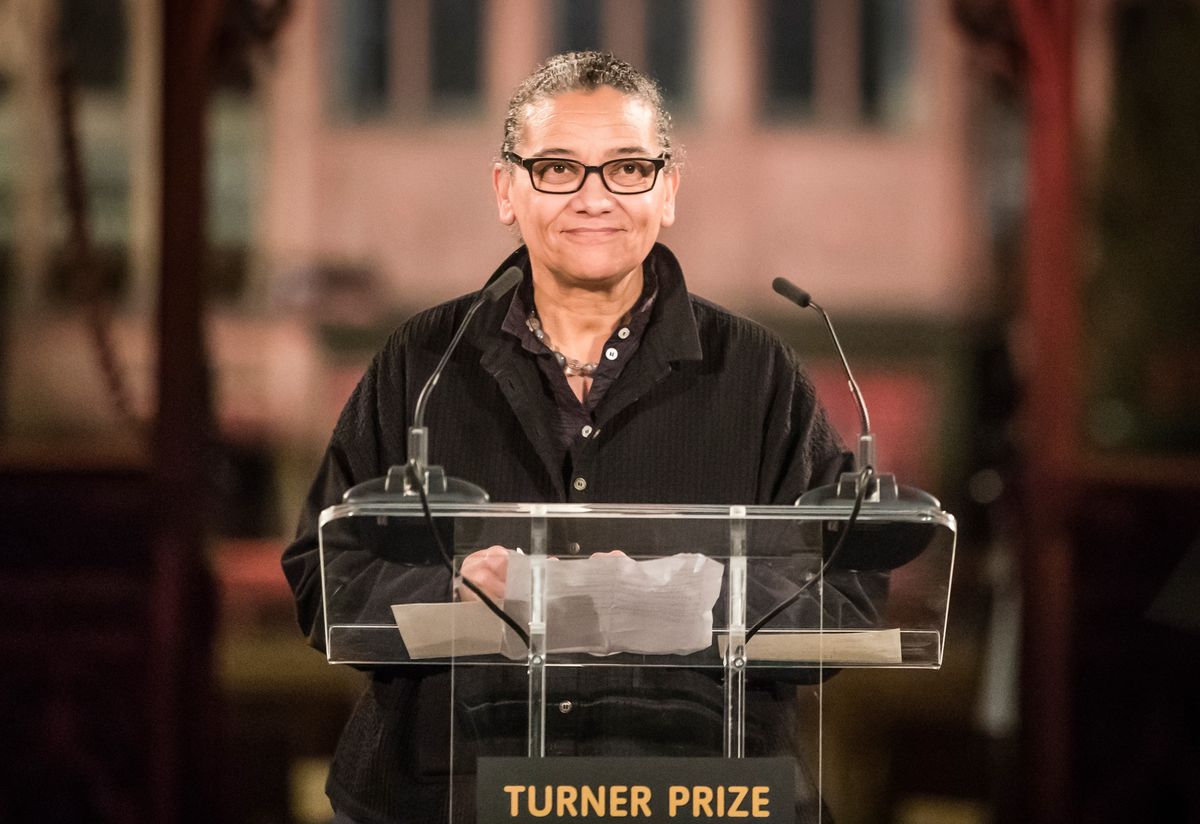Lubaina Himid has become the oldest artist ever to win the Tate’s Turner Prize, at the age of 63. The DJ and musician Goldie presented this year’s £25,000 award at a ceremony in Hull last night (5 December)—the first since the museum did away with the upper age limit of 50 for shortlisted artists (in place since 1991). Himid was chosen ahead of Hurvin Anderson, Andrea Büttner and Rosalind Nashashibi, who each took home £5,000.
“This year we opened the prize up to artists of all ages, recognising that breakthroughs can happen at any point in an artistic career,” said the Tate’s director, Maria Balshaw. Established in 1984, the annual award is aimed at UK-based artists who have had an outstanding exhibition in the previous year. In her acceptance speech, Himid thanked her supporters during the “wilderness years” and described her win as “a complete shock”. In 2017 Himid had solo shows at Modern Art Oxford and Spike Island in Bristol and participated in Nottingham Contemporary’s The Place is Here survey of 1980s black artists. She has only recently been represented by a gallery, Hollybush Gardens, which also represents Büttner.
The jury was led by the Tate Britain director Alex Farquharson and included the Frieze editor Dan Fox, the critic Martin Herbert, the Walker Art Center scholar Mason Leaver-Yap and the The Showroom director Emily Pethick. The panel praised all four nominees for their “socially engaged and visually imaginative” work, according to a Tate statement. Himid won the day for her “uncompromising tackling of issues including colonial history and how racism persists today” and her influence as a curator and professor as well as a visual artist, according to the statement.
The Turner Prize exhibition, which travels every two years to a different city outside London, was held this year in partnership with Hull as UK City of Culture. The show at the renovated Ferens Art Gallery includes Himid’s ceramic dinner service tracing the history of the slave trade and its abolition, and her satirical tableau of cut-out painted figures inspired by William Hogarth’s Marriage à la Mode.
The works are joined by Anderson’s dream-like tropical landscape paintings, Büttner’s woodblock prints of beggars and two films by Nashashibi—a commission for the Imperial War Museum observing daily life in Gaza and Vivian’s Garden, which explores the relationship between the mother-and-daughter artists in Guatemala, Elisabeth Wild and Vivian Suter. The exhibition has proved one of the most popular in Turner Prize history, attracting 90,000 visitors to date. It runs until 7 January 2018.
• For an interview with Lubaina Himid on latter-day history painting and her roots in stage design, see Lubaina Himid: Hidden Figures


